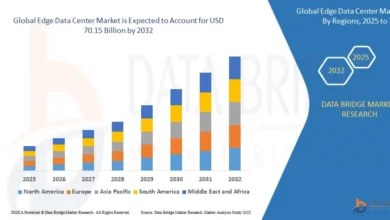
Content management has always adapted to technological change and consumer behavior. In the early days of the web, content management systems (CMS) focused almost exclusively on publishing for desktop websites. Over time, mobile browsing, social media, and eCommerce pushed businesses to rethink how they created and distributed content. Today, enterprises face a far more complex challenge: audiences interact with brands across dozens of touchpoints, from smartphones and smartwatches to voice assistants and virtual reality platforms. To meet these expectations, organizations are moving toward omnichannel-first strategies that prioritize seamless content delivery across every channel and device.
The Limitations of Traditional CMS
Traditional CMS platforms, often monolithic in design, were never built to handle today’s digital complexity. They tie content creation, storage, and presentation into a single system. While this simplifies publishing for a website, it creates barriers when content must be delivered across mobile apps, digital kiosks, or connected devices.
As businesses face these challenges, many turn to specialized such as contentful development services who help enterprises design flexible, API-first systems that can scale beyond web publishing. This shift reflects a broader realization: customer experiences are no longer limited to a single digital channel, and brands must adapt accordingly.
The shortcomings of legacy CMS become evident in several ways:
-
Limited flexibility: Updating or extending features often requires custom development, slowing innovation.
-
Fragmented experiences: Maintaining consistency across websites, apps, and third-party platforms is difficult.
-
Scalability issues: Legacy architectures struggle with high traffic and global content delivery.
-
Security risks: Outdated plugins and coupled frontends expand the attack surface for threats.
These constraints not only affect operational efficiency but also weaken customer engagement.
The Rise of Omnichannel-First Content Management
An omnichannel-first approach treats every digital interaction as equally important. Instead of prioritizing a single channel, such as a website, it focuses on centralizing content and distributing it wherever the customer is. Modern headless and composable CMS platforms support this strategy by separating content from presentation.
Content is created once, stored in a centralized hub, and delivered via APIs to any frontend or platform. This allows brands to maintain consistent messaging while tailoring experiences for specific devices or contexts. For example, a retail brand can push the same product data to its eCommerce site, mobile app, in-store displays, and social media campaigns without duplicating effort.
Key Drivers of Omnichannel-First Strategies
Several factors explain why enterprises are adopting omnichannel-first approaches:
-
Customer expectations: Consumers want frictionless interactions whether they browse on a laptop, scroll on a smartphone, or ask a voice assistant for help.
-
Expansion of digital channels: Wearables, IoT devices, and immersive technologies are expanding the digital ecosystem. Businesses must be ready to deliver content wherever audiences are.
-
Personalization needs: Tailoring messages based on customer behavior, location, or preferences requires flexible delivery systems.
-
Agility and speed: Enterprises must respond quickly to new trends, campaigns, or technologies without being slowed by rigid systems.
These drivers make omnichannel-first strategies not a trend but a necessity for enterprises aiming to stay competitive.
Core Elements of an Omnichannel-First Approach
To succeed with omnichannel-first content management, enterprises should focus on several foundational elements:
-
Centralized content repository: A single source of truth for content reduces duplication and ensures consistency.
-
API-driven architecture: APIs enable seamless integration with CRMs, marketing automation, analytics, and eCommerce platforms.
-
Personalization engines: AI and data-driven tools allow brands to tailor content for different audiences.
-
Scalable delivery infrastructure: Cloud-native systems and CDNs ensure fast, reliable content delivery worldwide.
-
Governance and compliance: Managing permissions, approvals, and regulations is essential, especially for global enterprises.
These elements combine to create a system that is both flexible and future-ready.
Business Benefits of Omnichannel-First Content Management
The benefits of adopting omnichannel-first strategies go beyond technology. Businesses that embrace this model often see:
-
Stronger customer engagement: Consistency across channels builds trust and loyalty.
-
Faster campaign execution: Teams can launch and adapt campaigns quickly without rebuilding content for each platform.
-
Lower operational costs: Centralized content reduces redundancy and cuts development overhead.
-
Better ROI: Optimized experiences lead to higher conversions and stronger long-term customer relationships.
For enterprises, these benefits translate into competitive advantage in markets where customer experience often defines success.
Industry Use Cases
Real-world examples demonstrate how omnichannel-first strategies deliver measurable results:
-
Retail and eCommerce: Brands deliver product details, promotions, and personalized recommendations consistently across websites, apps, and physical stores. This reduces cart abandonment and drives sales.
-
Healthcare: Hospitals and providers use omnichannel platforms to share information securely across patient portals, telehealth apps, and support centers, improving patient outcomes.
-
Media and Entertainment: Publishers distribute articles, videos, and live content seamlessly across websites, mobile apps, streaming services, and voice-enabled devices, maximizing reach.
-
Financial Services: Banks provide account details, alerts, and personalized insights across mobile apps, ATMs, and customer support platforms, enhancing trust and convenience.
These examples show that omnichannel-first is applicable across industries, each with unique customer needs.
Challenges to Adoption
Despite its advantages, adopting an omnichannel-first strategy is not without challenges:
-
Data migration: Moving large volumes of content from legacy systems can be complex and time-consuming.
-
Skills and resources: Building and managing API-first systems requires specialized expertise.
-
Governance: Enterprises must establish workflows to manage permissions, versioning, and compliance effectively.
-
Organizational alignment: IT and business teams must work together to define goals and processes.
These challenges highlight the importance of planning and phased implementation. Enterprises that address these issues upfront are better positioned for success.
Best Practices for Implementation
Enterprises can increase the likelihood of success by following proven best practices:
-
Define a clear strategy: Start by mapping customer journeys and identifying the most important channels.
-
Choose the right CMS platform: Evaluate headless or composable solutions based on scalability, integration capabilities, and usability.
-
Build flexible APIs: Ensure APIs connect seamlessly with existing enterprise systems.
-
Empower content teams: Provide intuitive workflows and training so content creators can focus on storytelling rather than technical tasks.
-
Measure and optimize: Continuously test campaigns, analyze performance, and refine strategies for better outcomes.
By focusing on these practices, organizations can maximize the benefits of omnichannel-first strategies.
The Road Ahead
Looking forward, omnichannel-first content management will become even more sophisticated. Advances in AI will enable predictive personalization, where content anticipates customer needs before they are expressed. Automation will streamline workflows, allowing content teams to focus on creativity rather than repetitive tasks.
New technologies like spatial computing, immersive AR/VR experiences, and connected environments will further expand the definition of “channel.” Enterprises that embrace composable, scalable content systems today will be ready to adapt to these future demands.
In the next decade, successful content management will not be defined by how well a system supports websites but by how effectively it enables consistent, personalized, and context-aware experiences across the entire digital ecosystem.
Summary
The future of content management lies in omnichannel-first strategies. Traditional CMS platforms are no longer sufficient to meet the demands of today’s connected customers. By centralizing content, leveraging APIs, and focusing on personalization, enterprises can create experiences that resonate across every channel.
This transformation is not just about technology, it is about building stronger customer relationships, improving agility, and preparing for the digital opportunities of tomorrow. Organizations that act now will position themselves at the forefront of content innovation, ready to deliver seamless, future-ready experiences that drive long-term success.




